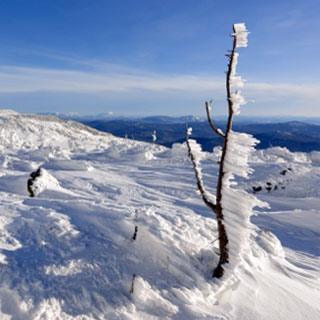
As winter sets in, the 800 hearty denizens of the coldest town on earth are bracing for one of the most frigid blasts yet, as forecasters predict that temperatures in Oymyakon, Siberia, could plunge to the coldest ever recorded in an inhabited location. There is no disputing that the mercury slides in Alaska and even in the Midwestern U.S. in the heart of winter. But if you want cold, visit Oymyakon, which this winter is expected to reach (or perhaps exceed) its record low temperature: a bone-chilling minus 90 degrees Fahrenheit (minus 68 degrees Celsius) reached on Feb. 6, 1933. It is a record matched only by nearby Verkhoyansk, Siberia, which endured minus 90 degrees Fahrenheit on Feb. 7, 1892.
Oymyakon's natives have learned to adapt to the freezing conditions: the town's only school closes only when temperatures sink below minus 61.6 degrees Fahrenheit (minus 52 degrees Celsius), San Francisco-based Green Options Media reported last week. (Quite the contrast to schools in the New York City and Washington, D.C., areas, which close at the mere mention of freezing temperatures and snow.)
Siberia is a breeding ground for extremely cold temperatures, thanks to its long winter nights, abundance of snow and location deep in Russia's interior, away from any body of water that might have a moderating effect on its weather, says Bob Oravec, lead forecaster at the National Oceanic and Atmospheric Administration's (NOAA) National Weather Service in Camp Springs, Md. Looking at his weather map this week, Oravec saw that pockets of Siberia were recording minus 60 degrees Fahrenheit (although he could not specifically determine the temperature in Oymyakon). The world record for the coldest temperature on earth, he adds, belongs to the South Pole, where it dropped to minus 128 degrees Fahrenheit (minus 89 degrees Celsius ) in 1983.
In places like Siberia, cold is a self-perpetuating condition. "When the earth is covered with snow, it radiates whatever little heat it has into space," Oravec says. "If you have snow cover, light winds and long nights, these are very good conditions for very cold temperatures to form."
Adds Jack Williams, coordinator of public outreach for the American Meteorological Society: "The main thing that you need for that kind of cold is a high-pressure area that takes over and keeps clouds from forming. Moisture helps warm the air." When there are no clouds and no moisture, infrared energy emitted from the earth escapes into the atmosphere.
Oymyakon's position at 2,264 feet (690 meters) above sea level in a valley between two mountain ranges also contributes to its chilly climate. "The cold air will pool and sink to the bottom of the valley," Oravec says, noting that "this is what happens in Fairbanks, Alaska, where temperatures in the surrounding mountains can be 50 degrees warmer."
Oravec cannot confirm or deny reports of birds freezing to death midflight in Oymyakon. But he points out that plants can survive in such cold if covered with snow, because the temperature below the snow is considerably warmer than on top of it. "A blanket of snow would insulate you," he says, "and hold the heat in from the ground."
Though Siberia holds the record for coldest inhabited areas, it doesn't hold a candle, er, thermometer to the poles. "There are places in Siberia that don't have snow all year-round, so the earth will heat more quickly in the sun than a place that is covered in ice, like the North Pole," Oravec says.
Scientists and politicians may argue over the extent and significance of climate change and global warming, but to residents of Oymyakon, it's little more than hot air.



Reader Comments
to our Newsletter